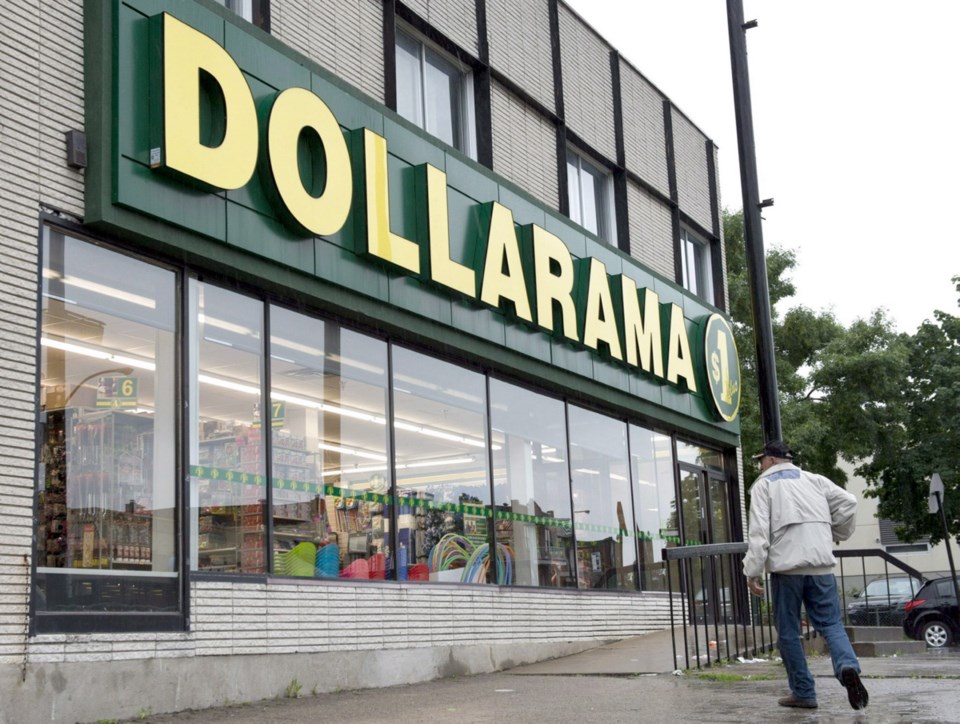We’ve all been to them at least once. A visit to any dollar store is something to remember. The bright lights, aisles filled with things you may or may not need, and the smell. The smell is distinctive, there’s nothing like it.
If we had to create a smell which mixes plastic with China, the smell in a dollar store would be it. Not overly appetizing, but still, a greater number of Canadians are grocery shopping in dollar stores these days.
In the United States, there’s a true dollar-store invasion. There are now more dollar stores in the U.S. than Starbucks and McDonald’s combined, more than 30,000 of them.
Major chains include Family Dollar, located mostly in cities, Dollar Tree where everything is actually $1, and Dollar General, the largest retailer in the U.S. when it comes to the number of stores. Dollar General has 16,000 stores in total.
By 2025, given how aggressive these companies are, the number of dollar stores could increase by 20 per cent. Some claim dollar stores are creating food deserts, forcing grocery stores in urban centres to close.
In Canada, the picture is becoming similar. The leader in discount grocery stores in Canada is Dollarama, which has more than 1,200 stores now. Dollar Tree has about 220 stores nationwide. Canada is also home to other retailers such as Dollar Store and More, Great Canadian and Buck or Two.
That’s more than 1,700 dollar stores in Canada. Per capita, the ratio is not as high as in the United States, but we are expecting that number to increase by almost 100 stores per year over the next few years. These stores sell everything from dishes, to gift wrapping, to clothes, to toys, and of course, food.
Dollar stores are increasing their food offering in order to compete against grocery stores. Sales at Dollarama are exceeding $3.5 billion yearly. Last quarter, Dollarama reported that some store sales were up by 5.3 per cent, in other words, business is good.
That number can only make grocers dream. Food sales are lifting the company’s financial results. Dollarama, the biggest Canadian chain, doesn’t report food sales, but we estimate that it sold more than $1.6 billion worth of food products last year.
We can easily hypothesize that dollar stores in Canada sold to Canadians more than $2.1 billion of food products this past year. That number represents the same amount of sales generated by 212 regular-sized grocery stores in Canada.
That number could reach $3 billion by the end of 2020. This does not represent a huge portion of the grocery market, a little under two per cent really. But given low margins and how low-priced these products are in dollar stores, traditional grocers have certainly felt the pressure.
Most Canadians still grocery shop in traditional grocery stores, yet some of us are tempted by food sold in dollar stores.
It’s anything but inspiring and many of these products offer little or no health benefits. All of the food is non-perishable. Most brands carried by dollar stores are unknown to Canadians. Those that are known are sold at a discounted price.
Unlike in the United States, where several dollar stores have freezers and fresh produce, none of our dollar stores sell fresh products, at least that we know of. However, what’s happening in the United States may be a sign of things to come. We may one day see dollar stores with a produce section and freezers selling food products.
The main reason why consumers flock to dollar stores to buy food is snacking. Dollar stores are like convenience stores, at a discount. They offer cheap, portable, simple quick-fixes for that in-between-meal fix we often crave. And let’s face it, many Canadians struggle financially, even if they have a job, a mortgage and a car.
Dollar stores are conveniently becoming more accessible for craft goods, sticky notes, gift bags, and of course, food.
Similar to the United States, snacking could be just the beginning. Dollar stores in Canada could soon collect more of our food dollars in the way of selling other staples such as fresh or frozen goods.
The dollar-store invasion in North America is real, and it’s hard to see an end to it. However, this hardly marks the end of the grocery store or creates food deserts, for that matter.
Some data suggests dollar stores have generated organic growth in food sales, products which would not have been sold otherwise by other players in the market.
Grocers in Canada have also done an incredible job defending urban markets in recent years, but the threat is real in suburbs and small towns. Given how well dollar store chains are managed, it will be interesting to see how things may change over the next few years.
Dr. Sylvain Charlebois is a professor in food distribution and policy at Dalhousie University.



